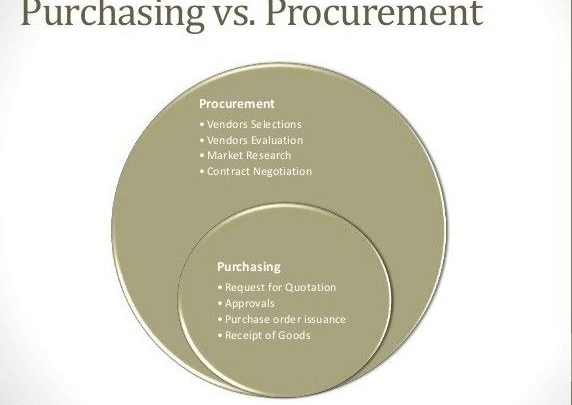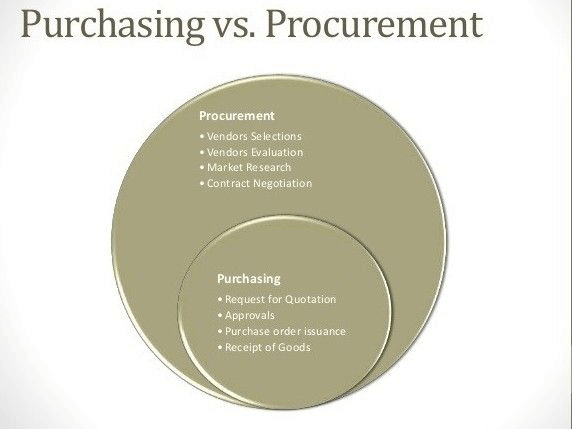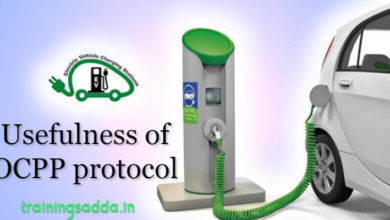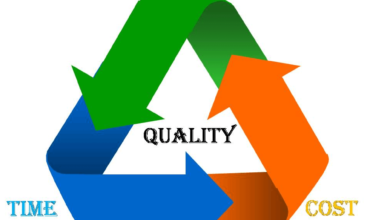What’s The Difference Between Procurement and Sourcing?

Procurement is the process of finding terms and agreeing to those terms and also placing orders of goods with suppliers, getting confirmation of the order, following up with suppliers until successful delivery of materials and then ensuring about the payment is done. If you don’t have a proper strategy for procurement then there’s always a chance for the halt of operations.
Table of Contents
Difference Between Procurement and Sourcing
It is different than sourcing. Let’s understand what is sourcing.
Sourcing
In sourcing, you must find the suppliers before procuring materials from the suppliers. With good sourcing strategy process, you will find trusty, stable, good quality, and low-cost suppliers to supply the goods you need. Here, a good strategy makes the procurement process more efficient. The less you spend, the more you earn. But, if you buy cheap materials, the resulting product will be of lesser quality. Sourcing helps the organization to acquire high quality of raw material on affordable rates. So, most of all it is important to maintain quality because customers want quality too along with the low price.
Read more: 10 Chatbots Marketing Strategies
Sourcing vs. Procurement
Many people think that the terms procurement and sourcing are the same but this is not correct. The difference between sourcing and procurement will be explained in this blog along with the explanation of Procurement strategic sourcing. Both sourcing and procurement are similar in meaning to the word purchasing but the main difference between both of them is:
Procurement is more than purchasing and its specifications are development, analysis, research, negotiation, marketing, buying activities, etc.
Sourcing is the process of identifying the requirement of organizations and getting a place from where this requirement can be fulfilled.
It can be said that procurement is more complex and wider as compared to the sourcing because sourcing is getting a source to satisfy needs of the organization while procurement is determination, analysis, and satisfying of the requirement.
Read more: NPS vs CES vs CSAT: What Works Best for Small Businesses?
The procurement process involves the following stages:
Stage 1: Need Recognition – Owner must recognize the ordered product that the product can be either a brand new item or one that is being re-ordered.
Stage 2: Particular Requirements – You have to examine as there are any particular requirements for various products or not.
Stage 3: Examine Supplier Options – There is an examination of various supplier options that can be considered for the solution.
Read more: How to Grow Your Startup Business Effectively
Stage 4: Price, Terms & conditions – After selecting the best supplier, firms must and should stick to that relationship.
Stage 5: Purchase Order and Delivery – The purchase order outlines the value, details and terms & conditions of the product and some other extra commitments. The transfer of the purchase order is done via email (highly recommended) or fax. The order must be delivered to the accurate address without damage to the product.
Stage 6: Facilitating –This stage tends to the practicality of the materials delivered.
Stage 7: Inspection – Once the order delivered the receiving organization review and, in this manner, acknowledges or rejects the item.
Stage 8: Payment – If there is any inconsistency, it must be settled before payment is made.
Stage 9: Record Keeping – The buying company must save all relevant documents for every successful purchase.

Sourcing process involves the following stages:
Stage 1: Investigation– In the Investigation stage, the organization investigates and analyzes the requirements.
Stage 2: Evaluation– In this stage, the benefits of the project are evaluated and sent to the shortlisted suppliers.
Read more: How Company Culture Impacts Customer Experience
Stage 3: Selecting the supplier– Here in this stage based on the above results, a final list of suppliers is selected.
Stage 4: Implementation– The implementation team implements the scheduled strategy.
Stage 5: Monitoring the Performance– The main objective of this stage is to maintain and monitor the procurement process that is flexible, dynamic and easily adaptable to a changing environment of the market.
Procurement strategic sourcing involves in the materials you need to operate our business. The procurement process is really easy with sourcing and in some cases, they both work together. You always don’t need a sourcing team and procurement team separately to find suppliers and to be involved in direct goods ordering. It’s smarter to buy with suppliers having a long-term contract. In larger associations, these contracts are regularly settled by a contract group bypassing the requirement for procurement.
Both Procurement and Sourcing keep good levels of contact with suppliers and furthermore keeps up significant data which improves further procedures and here, sourcing department mostly focuses on approaches to speed up buy activity and transaction history and is more worried about time, quality, area, and the amount at the best price.
Read more: Reasons to Prefer an Online Task Management Software
Final Verdict:
There might be a reasonable contrast between procurement and sourcing. Before the start of procurement, sourcing occurs. In brief, procurement is all about getting the materials you needed, whereas sourcing is about checking and finding the providers of all those materials.
Comments
0 comments




